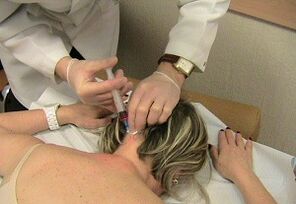Pathological conditions of the musculoskeletal system are more common than other known diseases. According to statistics, all people over the age of 40 show symptoms of similar illnesses. Signs of cervical osteochondrosis are especially common. Therefore, the symptoms and treatment of cervical osteochondrosis, as well as its causes, must be known by everyone, in order to understand how to prevent the disease and eliminate the occurrence of complications.

What is cervical osteochondrosis?
Osteochondrosis is a disease characterized by alterations in the intervertebral discs and dystrophy of the cartilaginous tissue. In 25% of cases, osteochondrosis of the cervical spine occurs, which develops due to the structural characteristics of this segment of the spine.
The cervical region includes 7 vertebrae of different structures, located very close to each other. It is in this area of the body that complex movements are performed. In the cervical region, there are many peripheral and spinal nerves that affect the internal organs. Also, the neck is saturated with blood vessels, the main vessels passing through here: the jugular vein, carotid and vertebral arteries. Often, with pathology, the vertebral artery suffers, which is involved in supplying blood to the brain.
The involvement of vessels and nerves in the process leads to the development of serious complications (cerebral ischemia, stroke), therefore, the timely identified signs and treatment of cervical osteochondrosis are important medical and human health issues.
Causes and symptoms of disease
The causes of cervical osteochondrosis are numerous, but they all contribute to an increase in the load on the neck region or lead to a change in the structure of the vertebrae themselves. They are:
- posture violation;
- overweight;
- sedentary lifestyle;
- spinal injury;
- increased physical activity;
- stress;
- poor physical fitness;
- genetic predisposition;
- excessive strain on the muscles during work;
- hormonal disorders;
- metabolic changes;
- Poor nutrition;
- cervical spine anomalies and defects;
- spinal diseases.
The clinical signs of pathology are associated with the structural characteristics of the cervical segment of the spine. Even the smallest pathological processes lead to symptoms. Most of the time, patients complain of:
- pain in neck, neck, arms and shoulders, head;
- weakness of the hands and impaired sensitivity;
- limitation of movement in the neck and upper limbs;
- crunch when turning and tilting the head;
- dizziness;
- lack of coordination;
- weakness;
- changes in hearing, vision.
degrees of osteochondrosis
<2_img_rightxx>The degree of pathology is due to clinical manifestations and complaints.
- 1 degree. There are virtually no symptoms. There is slight pain and discomfort in the neck, which increases with movement. A slight muscle overtension is determined, which is associated with pinched nerves and the development of radicular syndrome.
- 2nd degree. The patient is concerned about severe pain in the neck, which radiates to other parts of the body and is caused by shortening the distance between the vertebrae and pinching the nerves. In addition, there is a headache, severe general weakness, and decreased performance. This is due to the addition of the vertebral artery syndrome (it is involved in the pathological process).
- 3 degrees. Symptoms are intense, growing, pain is constant and unbearable. There is violation of the sensitivity of the upper limbs, weakness, limited mobility of the cervical segment. This is due to the development of intervertebral hernias.
- 4 degrees. The intervertebral disc is completely replaced by connective tissue, which leads to constant pain, stiffness, tinnitus, problems with vision, hearing and motor coordination. Persistent brain and movement disorders are characteristic.
The symptoms and photos of cervical osteochondrosis show the seriousness of the condition, so when the first signs appear, consult a doctor.
Treatment

Cervical osteochondrosis symptoms and treatment are interrelated concepts, as the therapeutic methods lead to the reduction and disappearance of symptoms. The disease can be completely cured only in the early stages, but during that time few seek help. In other cases, therapy can stop other degenerative-dystrophic changes, reduce symptoms and prevent the development of complications.
Many people wonder how to treat the symptoms of cervical osteochondrosis. There is no definitive answer, as each patient is individual and treatment methods must be selected for each specific case. But all the principles of therapy come down to relieving inflammation and pain, relieving muscle spasm, improving blood supply and nutrition to the cervical spine, and strengthening the musculoskeletal system.
The main methods of treatment:
- taking medications;
- physiotherapy;
- massage;
- Exercise therapy.
Medication:
- NSAIDs (relieve inflammation and pain);
- B vitamins (improves metabolism and nutrition of nerve fibers);
- muscle relaxants (relieve muscle spasms);
- chondroprotective (prevent the destruction of cartilage tissue and contribute to its restoration);
- warming creams and ointments (relieve pain and muscle spasms)
You shouldn't limit yourself to just taking medication. It is important to use all therapy methods comprehensively and systematically. The combination of medication, massage and exercise therapy helps to get quick results and helps to maintain the effect for a long time.



































